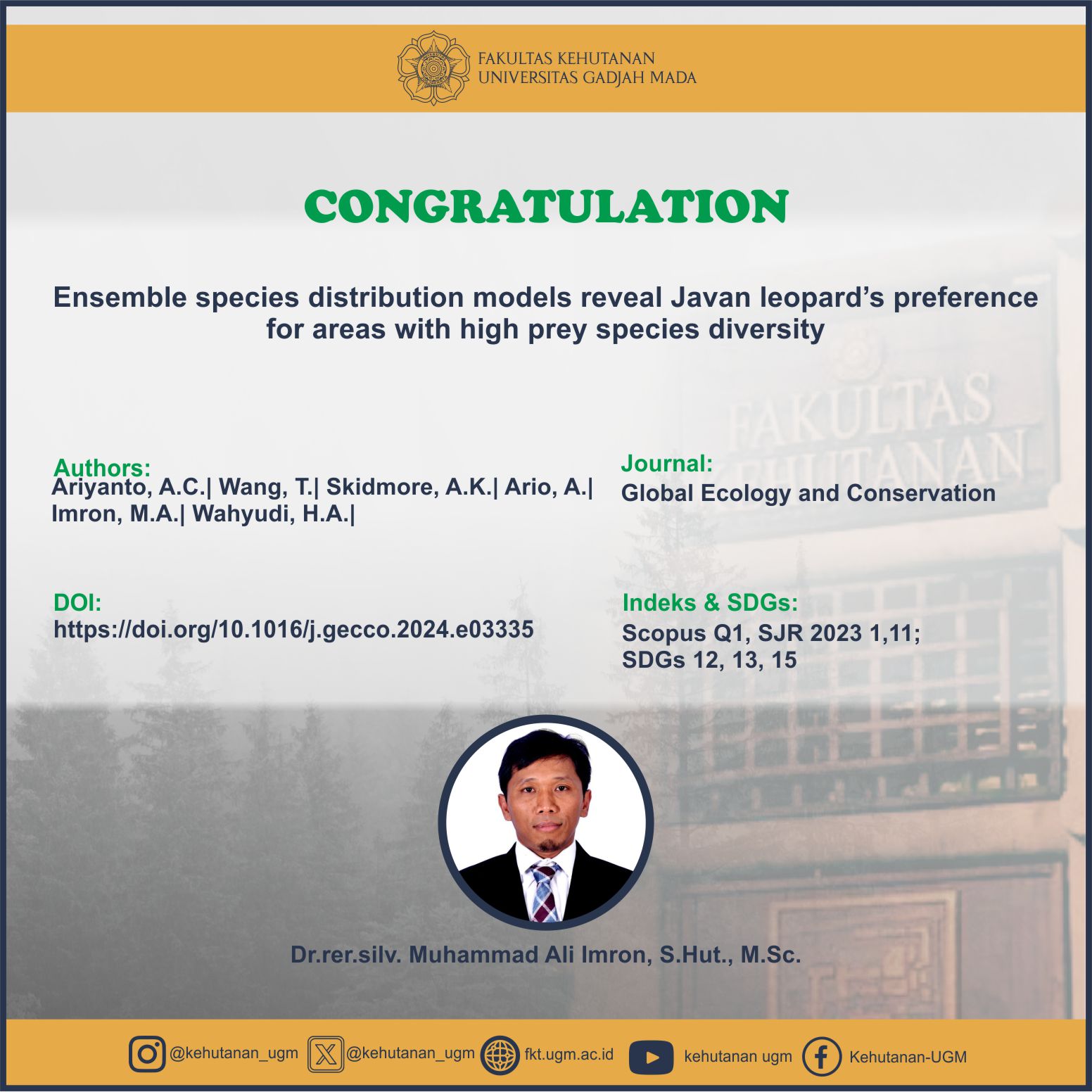
Abstract
Like many other large carnivores worldwide, the Javan leopard (Panthera pardus melas) faces significant threats from prey depletion due to human disturbance and habitat loss, yet the distribution of its prey across Java and the relationship between prey diversity and leopard presence remain poorly understood at broad spatial scales. This study predicted the distribution of eight prey species for the Javan leopard across Java using an ensemble species distribution model and identified key factors influencing prey distribution. A prey diversity map was generated to evaluate the relationship between prey diversity and Javan leopard occurrence. The results showed that model accuracy for each prey species, as measured by the True Skill Statistic (TSS) and continuous Boyce index (BCI), ranged from 0.609 to 0.951 and 0.628 to 0.965, respectively, with distance to primary and secondary forests as the most influential predictor. The results also showed that areas with high prey diversity were primarily concentrated in western and eastern Java, and approximately 94.3 % of leopard occurrence points were found in regions with five or more prey species. This is the first comprehensive spatial prediction of prey diversity for Javan leopards, emphasizing the predator’s preference for habitats with high prey diversity. These findings suggest that in landscapes harboring large carnivores as apex predators, areas with elevated prey diversity may serve as key indicators of potential core habitats for these carnivores.
SDGs:
SDG 12:Responsible Consumption and Production
SDG 13:Climate Action
SDG 15:Life on Land
Link Dokumen:
Download
